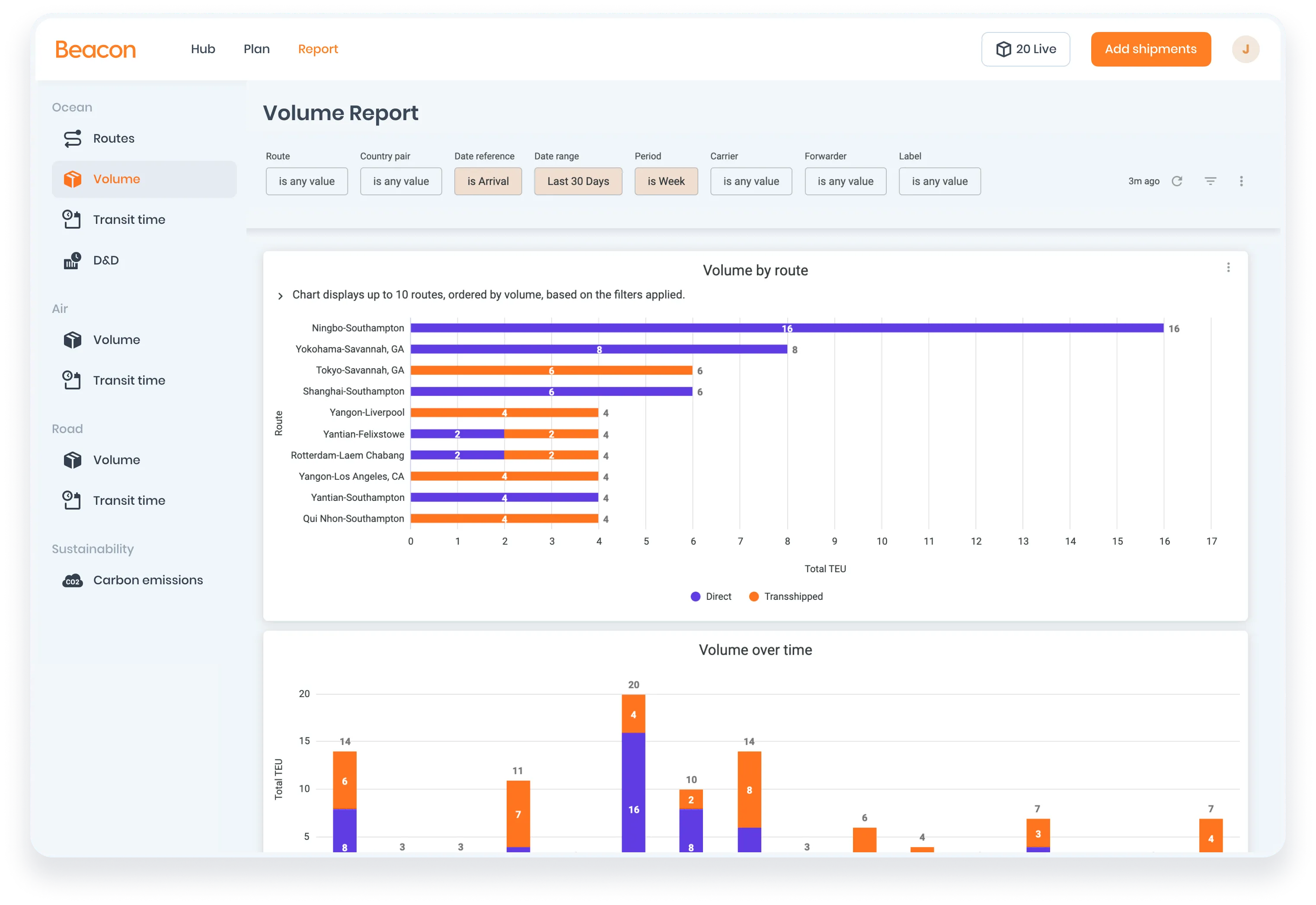Identify and manage high risk shipping routes
Pinpoint the routes and carriers that are hurting supply chain reliability and OTIF performance, and take action to de-risk your logistics network.

Pinpoint the routes and carriers that are hurting supply chain reliability and OTIF performance, and take action to de-risk your logistics network.

"Real live data on the status of our containers all in one place instead of having to interrogate all of the individual shipping websites. Also numerous filters to interrogate your data and useful Live Boards to share information privately to other parties"
Colin L
Logistics Coordinator
@
Tata Consumer Products

"Transparent overview of your supply chain and brilliant visualization. Friendly team, superb customer service, keen to learn about our business needs. Very smooth relationship so far."
Christian D
Supply Chain Manager
@
Tilda

“We’re able to spot inconsistencies and errors quickly, which means we can resolve problems much faster than we did before. We now understand our freight spend much better than previously.”
Sam Presland
Logistics Manager
@
Fever Tree

Logistics route optimization involves analyzing and improving the routes taken by ocean container carriers to enhance efficiency, reduce delays, and minimize costs. It focuses on identifying delay-prone routes and pinch points in the supply chain to streamline operations.
The platform collects and analyzes historical freight transport data to pinpoint routes that frequently experience delays and quanitfy the severity of delays. This allows companies to make informed decisions about route planning and carrier selection.
Pinch points are bottlenecks or areas where the flow of goods is consistently slowed or disrupted. Beacon helps you understand the ports that are the pinch points in your network.
A variety of data points are used in logistics route optimization. These most commonly include carrier on-time performance, historical lead times, container dwell times and port congestion statistics.
By identifying the most efficient routes and avoiding delay-prone paths, companies can reduce fuel consumption, lower transportation costs, and minimize demurrage and detention fees. This leads to significant cost savings and more predictable lead times.